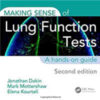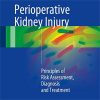Sepsis-induced coagulopathy: a matter of timeline
link.springer.comLeone et al. have nicely outlined the most frequent questions about thrombocytopenia in sepsis. Besides thrombocytopenia, sepsis indeed induces numerous pathophysiological changes.
Among these, the acute-phase response mediated by pro-inflammatory cytokines stimulates hepatic synthesis of acute-phase proteins.
Notably, fibrinogen levels increase significantly within 24-48h of sepsis onset, reflecting the liver’s heightened production in response to infection and tissue injury.
As a crucial player in coagulation, wound healing, and inflammation, fibrinogen’s elevated levels in sepsis patients represent a complex interplay between adaptive mechanisms and pathologic processes.
Fibrinogen is converted by thrombin into fibrin, forming a mesh stabilizing blood clots.
In sepsis, this coagulative function contributes to immunothrombosis, which contains pathogens and prevents their dissemination.
In addition, fibrinogen and its degradation products modulate immune responses by interacting with various cells, including macrophages and neutrophils, thereby enhancing phagocytosis and cytokine production.

















